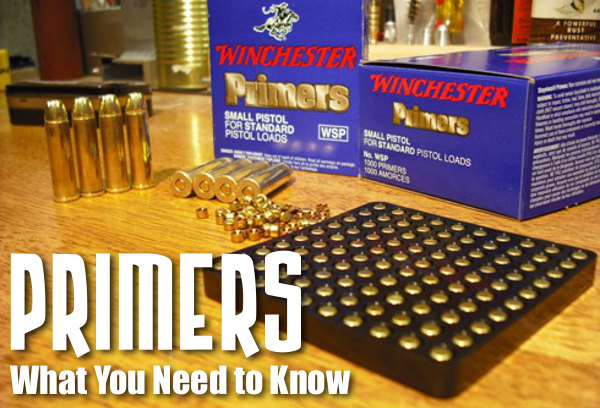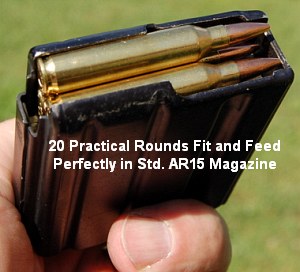Winchester Pistol Primer on the bench. Photo courtesy UltimateReloader.com. Shooting Times has a great article on primers. We recommend that you read Mysteries and Misconceptions of the All-Important Primer by Allan Jones. Jones is an expert in primer design and construction. He has written three editions of Speer Reloading manual and served as manager of technical publications at CCI Ammunition, Speer Bullets, and Speer Bullets. This authoritative article from Shooting Times explains the finer points of primer construction and design. Jones also corrects some common misconceptions about primers. He also reveals little-known facts. Here are some highlights of the article: Size matters
Useful Trivia – although Small Rifle primers and Small Pistols have the same depth specification, Large Rifle primers and Large Pistols do not. The pocket of a Large Pistol is shallower than that of a Large Rifle primer, by 0.008 to 0.09 inch. Magnum Primers
There are two ways of making a Magnum primer: either add more of the standard chemical mixture to give a longer burning flame, or change the chemical mix to one that has a more aggressive burn characteristic. CCI used to use the first option for Magnum Rifle primers prior to 1989. After that, we switched over to a mix optimized specifically for spherical propulants that produced a 24% boost in flame temperature and 16% boost in gas. Foiled Again
The paper disk is usually placed between the anvil of the component primer and the priming mixture. It’s called “foil-paper” not because it is made of foil, but because it replaces metal foil that was used to seal the early percussion caps. This little disk is purely a convenience for manufacturing. Wet primer pellets have a smaller diameter than the inside diameter when they are inserted into the cup and must be compressed to reach their correct diameter and height. The wet mix would adhere to the compaction pins without the foil paper and clog up the assembly. Read the Full Primer Story at ShootingTimes.com. Primer functionalities and primer types compared.
This video examines a variety primer types, both domestic and foreign. The video explains how primers work, then goes on to explain the key characteristics of magnum primers and mil-spec (designed for semi auto rifles) primers.

















